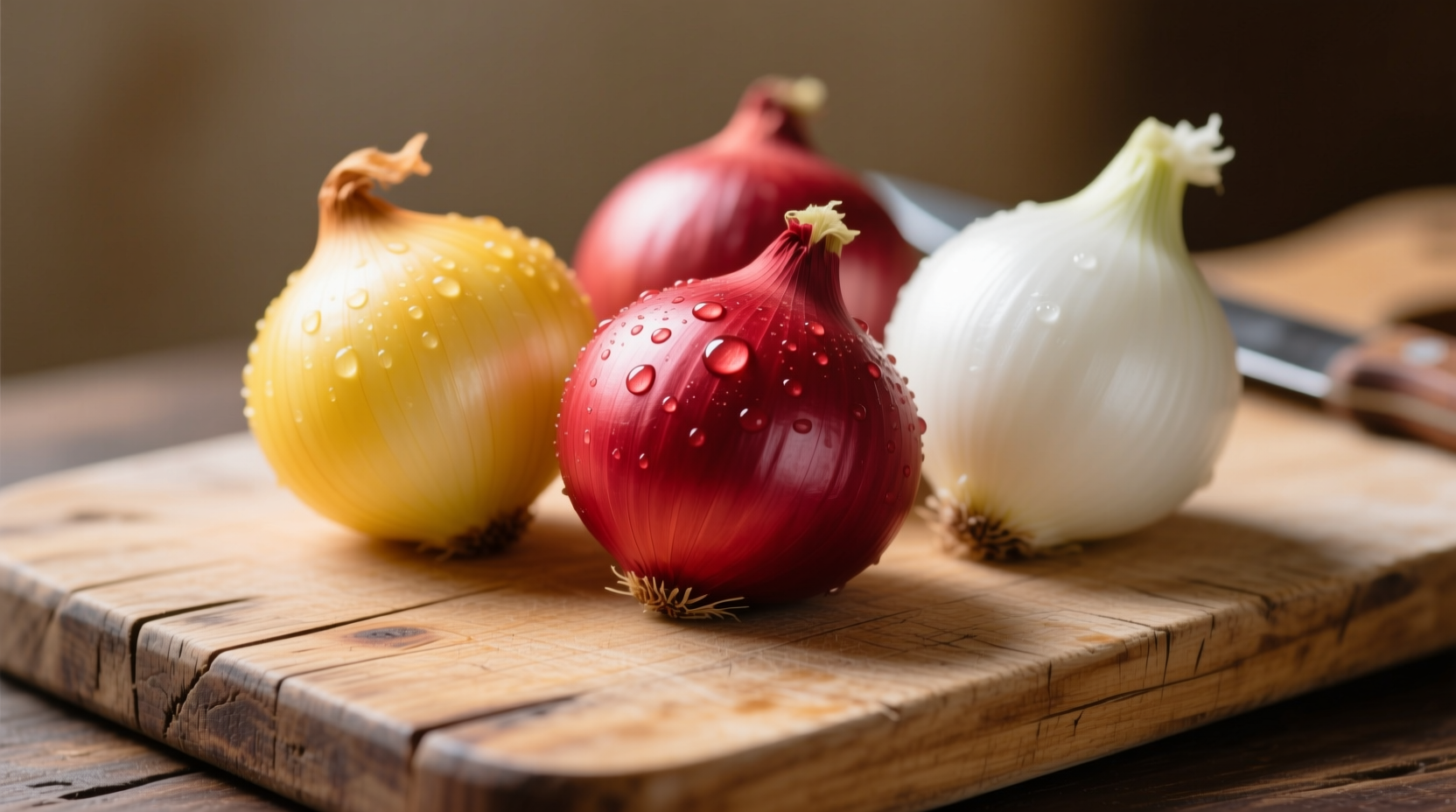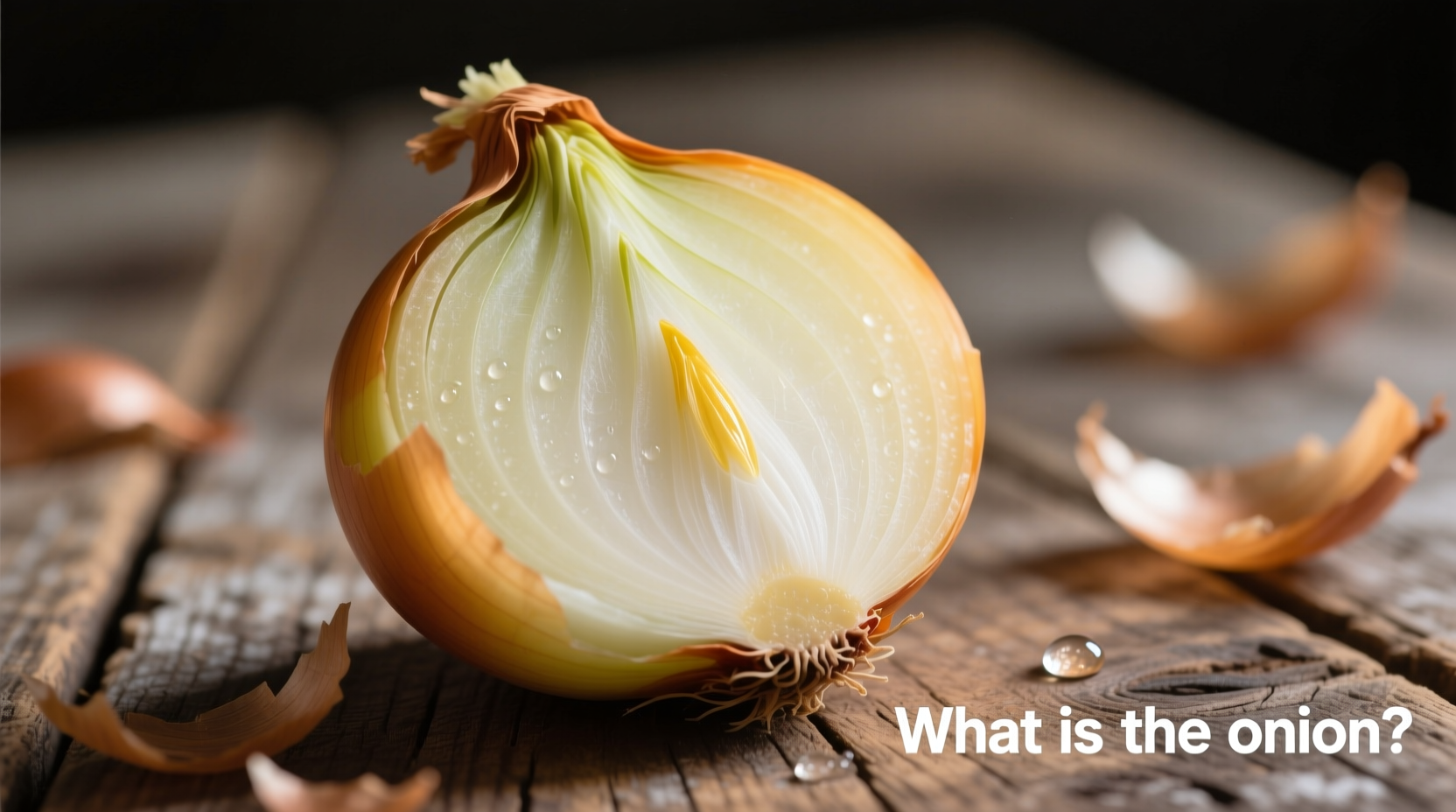An onion is a edible bulb vegetable belonging to the Allium genus, scientifically classified as Allium cepa. This versatile kitchen staple features layered flesh enclosed in a papery skin, delivering a distinctive pungent flavor that transforms when cooked. Onions provide essential nutrients including vitamin C, B vitamins, and antioxidants while serving as a fundamental flavor base in cuisines worldwide.
Understanding this humble yet indispensable ingredient goes beyond simply recognizing its presence in your kitchen. Whether you're a home cook looking to elevate your dishes or someone curious about this culinary cornerstone, knowing the science, varieties, and applications of onions can transform your cooking experience. Let's explore everything you need to know about this remarkable vegetable that has been cultivated for over 5,000 years.
The Botanical Identity of Onions
Scientifically known as Allium cepa, onions belong to the Amaryllidaceae family, which also includes garlic, leeks, and chives. Unlike root vegetables that grow underground from root structures, onions are actually modified leaves that form layered bulbs. This biological distinction explains why onions regenerate from the bulb rather than seeds in many cultivation practices.
The characteristic pungency of raw onions comes from sulfur compounds that convert to volatile gases when cells are damaged through cutting or crushing. These same compounds transform during cooking, creating the sweet, complex flavors that form the foundation of countless dishes across global cuisines.
Major Onion Varieties Compared
| Variety | Color & Appearance | Flavor Profile | Best Culinary Uses |
|---|---|---|---|
| Yellow Onions | Brownish-gold skin, white to yellow flesh | Strong, pungent when raw; sweetens dramatically when cooked | General cooking, caramelizing, soups, stews |
| Red Onions | Purple-red skin and flesh | Sharper, slightly spicier than yellow | Salads, salsas, pickling, garnishes |
| White Onions | Pale gold skin, white flesh | Crisp, clean flavor with moderate heat | Mexican cuisine, fresh salsas, grilling |
| Sweet Onions | Lighter skin, higher water content | Mild, naturally sweet | Eating raw, onion rings, salads |
Historical Journey of Onions
Onions rank among humanity's oldest cultivated crops, with archaeological evidence dating back to 5000 BCE in Bronze Age settlements. Ancient Egyptians revered onions not only as food but as sacred objects, often using them in burial rituals and taking onion-shaped oaths. The pyramid builders' diets heavily featured onions, as documented in preserved papyri from workers' settlements near Giza.
Throughout history, onions traveled along trade routes that connected civilizations. Greek athletes consumed onions before competitions for strength, while Roman soldiers carried them on military campaigns. By the Middle Ages, onions became so valuable they were used as currency for rent payments and gifts. When European settlers arrived in North America, they introduced onion cultivation to indigenous populations who had previously relied on native Allium species.
Nutritional Benefits and Health Properties
Beyond their culinary value, onions deliver impressive nutritional benefits. A medium-sized onion (about 110g) provides approximately:
- 44 calories
- 10g of carbohydrates
- 2g of dietary fiber
- 11% of the daily recommended vitamin C
- Significant amounts of B vitamins, particularly folate
- Various antioxidants including quercetin
Research from the USDA Agricultural Research Service indicates that onions contain compounds with potential anti-inflammatory and antioxidant properties. The sulfur compounds responsible for onions' pungency may support cardiovascular health, while the flavonoids in red onions show promise in laboratory studies for their potential health benefits.
Practical Kitchen Applications
Understanding when and how to use different onion varieties can significantly impact your cooking results. Professional chefs follow these practical guidelines:
Raw applications: Sweet onions like Vidalia or Walla Walla work best in salads and fresh salsas due to their lower sulfur content. Red onions provide both flavor and vibrant color to raw preparations. For maximum crispness, slice onions thinly and soak in ice water for 15-20 minutes before use.
Cooked applications: Yellow onions form the "holy trinity" with celery and bell peppers in many cuisines and create the deepest caramelization. When making French onion soup or other dishes requiring prolonged cooking, yellow onions develop the most complex sweetness. White onions maintain their structure better for grilling and hold up well in Mexican cuisine applications.
Flavor layering technique: Start with onions as your aromatic base (often called "sofrito" or "mirepoix" depending on the cuisine), cooking them slowly over medium heat until translucent before adding other ingredients. This foundational step builds depth in sauces, soups, and stews that cannot be replicated by adding onions later in the cooking process.

Selecting and Storing Onions Properly
Choosing quality onions and storing them correctly extends their shelf life and preserves flavor. Look for onions that feel heavy for their size with dry, papery skins free from spots or soft areas. Avoid onions with green sprouts, which indicate age and potential flavor degradation.
Proper storage varies by type:
- Yellow and red onions: Store in a cool, dark, well-ventilated place (not the refrigerator) for up to 2-3 months
- Sweet onions: More perishable; use within 1-2 weeks or store in refrigerator crisper drawer
- Green onions: Trim roots, place in glass of water, cover with plastic bag, and refrigerate
Never store onions near potatoes, as potatoes release moisture and gases that accelerate onion spoilage. Once cut, store unused portions in airtight containers in the refrigerator for up to 7 days.
Common Questions About Onions
Are onions considered vegetables?
Yes, onions are classified as vegetables botanically and culinarily. Specifically, they're bulb vegetables, which are modified leaves rather than true roots. The edible portion consists of fleshy leaf bases that form concentric layers around a central bud.
Why do onions make you cry when cutting them?
Onions release sulfur compounds when cut, which react with enzymes to form a volatile gas called syn-propanethial-S-oxide. This gas reacts with moisture in your eyes to create a mild sulfuric acid, triggering tear production as a protective response. Chilling onions before cutting can reduce this effect.
Can you eat onion skins?
While onion skins are technically edible and contain concentrated antioxidants, they're generally not consumed due to their tough, papery texture. Some chefs simmer onion skins in stocks for additional flavor and color, then strain them out before serving. The skins themselves aren't toxic but aren't pleasant to eat directly.
What's the difference between shallots and regular onions?
Shallots (Allium cepa var. aggregatum) are a specific variety of onion that grow in clusters rather than single bulbs. They have a more delicate, complex flavor with subtle garlic notes and less sulfuric bite than regular onions. Shallots contain more sugar and less water, making them ideal for raw applications and delicate sauces where regular onions might overpower other ingredients.











 浙公网安备
33010002000092号
浙公网安备
33010002000092号 浙B2-20120091-4
浙B2-20120091-4